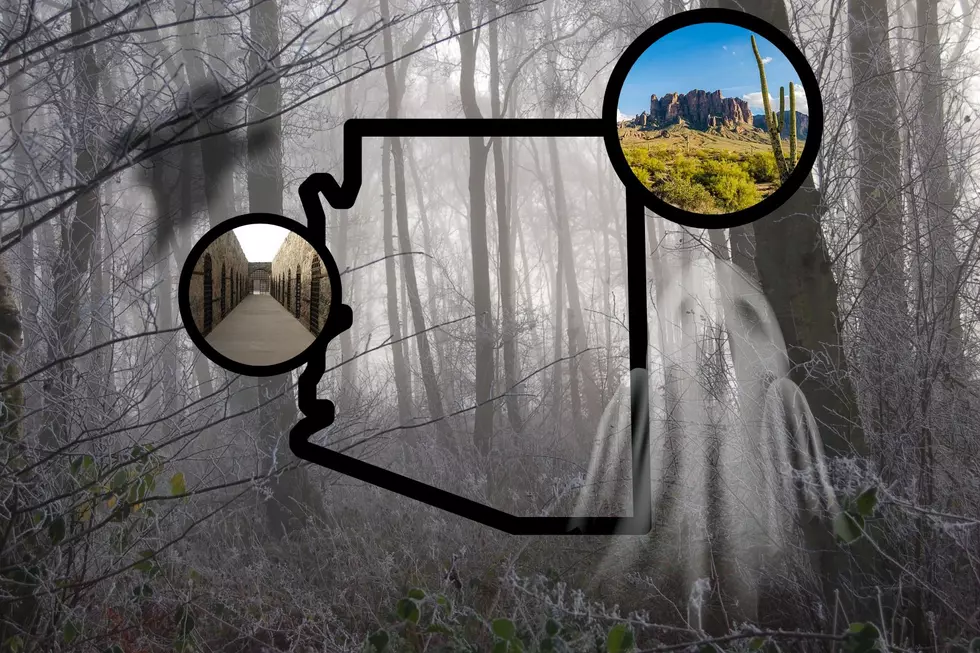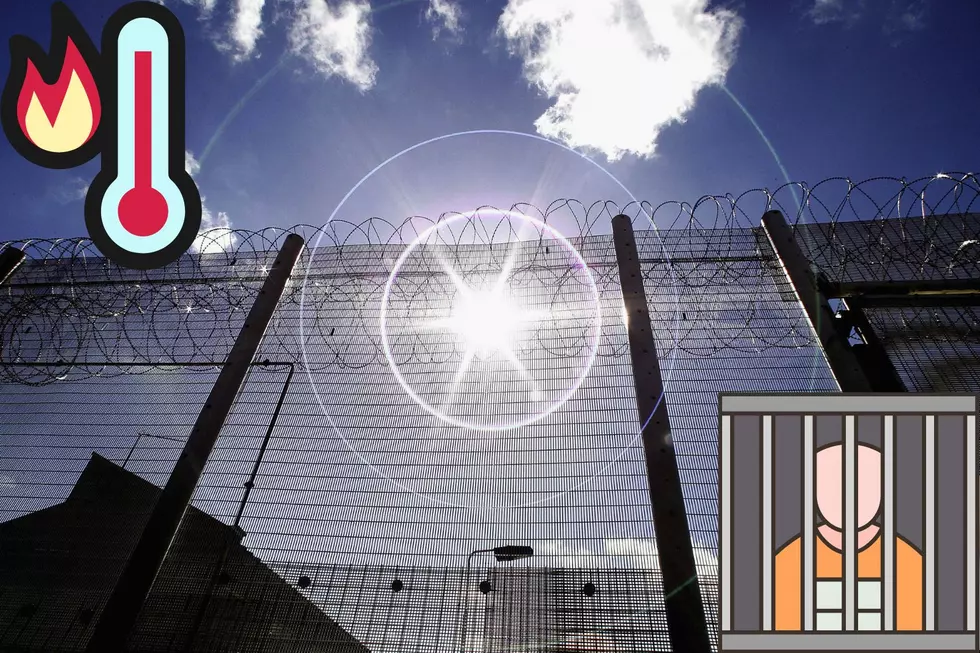![The ASARCO Stacks – A Final Look from Smeltertown Cemetery [GALLERY]](http://townsquare.media/site/62/files/2013/04/20130412-180435-e1365811880210.jpg?w=980&q=75)
The ASARCO Stacks – A Final Look from Smeltertown Cemetery [GALLERY]
They have kept watch over the city for most of our lifetimes, ceremonial sentinels dressed in brick and soot -- uniforms of a past era. In their day, they belched tons of vaporized metals and minerals high into the desert air. But not high enough.
Saturday, they will be brought back down to earth. The ASARCO smokestacks that have punctuated the El Paso skyline as an exclamation will become commas in the city's history books.
Their existence will be ended near enough to Smeltertown Cemetery for them to be considered the last two ASARCO employees interred in this unlikely boneyard; its hard, rocky dirt the color of bleached khaki, bright enough in the sun to make you snow-blind in July.
ASH TO ASHES
Throughout the late 19th and all of the 20th century, the smelter refined copper taken from mines, first from Mexico, then from ASARCO mines in Arizona and New Mexico.
The smokestacks weren't constructed until much later, but they weren't built just because that's what smelting plants did. Even before the U.S. government did many environmental impact studies, evidence was emerging that this particular heavy industry was doing El Paso more harm than good.
The byproduct of copper smelting is sulfur dioxide -- in essence, poison gas. The plant was also refining lead up until the late 1970's. The side effects of ASARCO's work became something nobody wanted to touch with a 10-foot pole.
So ASARCO built a 612-foot pole.
That was the first smokestack, built in 1951 to push the smelter's caustic exhaust further up into the air like some kind of reverse ostrich putting its head in the clouds instead of the ground.
But as more studies were made, the raw data on the harm being done to the area began to pour in like the slag that was being poured out. So, ASARCO built an 838-foot pole -- the big stack -- in 1966.
It still wasn't enough.
CLEARING THE AIR
The El Paso City-County Health Department said that in just two years, between 1969 and 1971, ASARCO smelting had pumped 1,012 metric tons of sulfur dioxide into the atmosphere.
Around that time, the City of El Paso and the State of Texas filed suit against ASARCO for violating the Texas Clean Air Act. El Paso had the highest concentrations of lead in the state.
Lead was found in the soil in Smeltertown, the company town built mainly by and for ASARCO employees. Children there were showing signs of lead poisoning. ASARCO bought the land and moved the residents.
THAT'S 'SILVER' LINING, NOT 'LEAD'
Eventually, time, lawsuits and a changing business climate caught up with ASARCO. After the bottom fell out of the copper market, the plant was shuttered in 1999. The company was sanctioned and sued into paying millions of dollars to clean up the place.
However, at its peak in the 1990's, ASARCO employed over 1,000 El Pasoans -- good-paying jobs, gone before the new millennium and right after NAFTA had cost the garment industry its place atop El Paso's economic food chain.
And the stacks have stood over it all. Emptied of their original purpose, El Paso has forgotten about their history and argued about their future. They have become reflectors of whatever light El Pasoans have cast upon them.
Giant stakes pinning this city to a last-century mentality that won't be missed.
Silent finger gestures directed to those who helped close the doors to good jobs.
Familiar beacons that deserve to be preserved and made into monuments.
THE FINAL ACT
Truthfully, it would be years before the toxicity of the soil and the inside of the smokestacks themselves could allow the site to be used for anything. That's as sure as the hills of slag that separate the stacks from Smeltertown Cemetery.
Now in their last days, down at the base of each smokestack, earnest workers noisily ready them for one last grand bit of sound before the high spring winds that come screaming off Mt. Cristo Rey will have nothing in their path until they meet the Franklins.
Up in the cemetery, serenity has long replaced industry in the final resting place of so many who toiled at the smelter, even from before ASARCO, which took over just one year into the 20th century.
Doves lay eggs in the scrub brush that grows around crumbling graves. Crosses made of lead pipe and splintered wood will soon be the only markers that anything ever existed in that hard stripe of desert next to the Rio Grande.
The only noise is a sharp breeze moving the spines of yucca plants, howling slightly as it meets the hard, flat resistance of gravestones.
It's the sound of History, and soon nothing more.
(Photos by Duke Keith and Kevin Vargas, taken in Smeltertown Cemetery, along Paisano Road and from Transmountain Road.)
More From KLAQ El Paso









